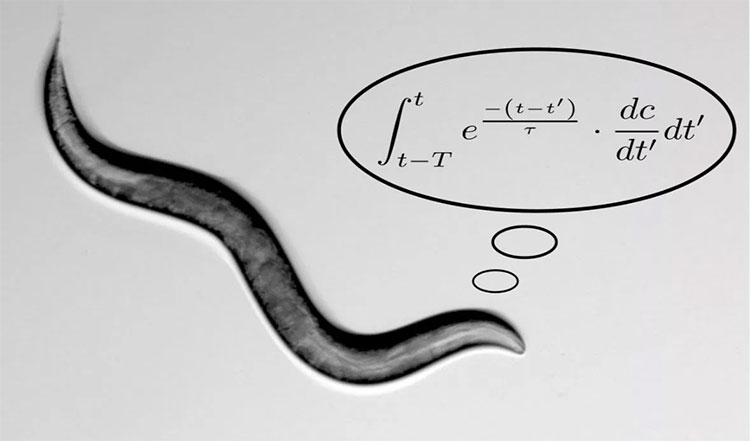True story: Worm species find food thanks to complex mathematical programming
Don't think worms are low-level animals, they don't know anything. Recently, scientists have found complex mathematical equations behind the way to find food for worms.
Like most worms, species rely on their sense of smell to find food. But how does the worm understand the smell? How can a taste be translated into understandable information and put into the brain of that worm?
'Imagine you are inside a big and completely dark room, in the middle of that space there is a cream cake that has just been baked from the oven. To find the cake when you can't use your eyes, you'll have to smell it and follow that scent to find the cake.
So are earthworms. When neurons receive information about scents, the brain signals the worm to start crawling. The scent still emits, the worms will still crawl, if the scent suddenly disappears, this animal will stop and continue to think or search for other scents' , Alon Zaslaver, neurologist at the University Hebrew, Jerusalem, said.

Scientists have developed complex mathematical equations from worms' behavioral search behavior, which are not simple but sequences of right and wrong judgments.(Photo: Alon Zaslaver / Hebrew University).
Accordingly, in the latest study, scientists found the mechanism by which the brains of the worms work to find a direction instead when the original scent was suddenly turned off.
This study shows a series of consecutive and related activities in secondary neurons. The first cell is responsible for recognizing and tracking a scent. The second cell will determine if the scent is weak or strong, if it is strong, the worms will crawl. If it is weak, it will consider whether it will stop or go in another direction.
These two cells work in parallel so that the worms keep on crawling back to the source of the aroma. Scientists have used a fluorescent protein that attaches to these two cells to monitor them, and then re-takes pictures when the cow worms search for food in the laboratory.
The team of scientists initially placed food in places where it was easy to detect and reach, putting food in a place that was difficult to reach and eventually placing in different areas to stimulate the activity of two cells. Based on the recorded activities, scientists analyzed and formed complex chemical equations from cow behavior to finding worms' food.
'It turns out that crawling for food of worms looks simple, but it is a sequence of actions taken from right / wrong judgment, which causes worms to act without fear of error, if there is an error. wrong they will immediately correct the error and from then on finding food becomes easier.
When tracking the path of the worm in the laboratory, we were surprised when it judged differently from our original prediction. The path of the worm when analyzed, creates the right and wrong mathematical equations that are very scientific, not as simple as what we see , 'Zaslaver said.
- Tips 'mental arithmetic' you can't find in textbooks
- Deep birds and basic information about this bird
- From chaos to order: How to find food?
- Girls outperform boys when programming games
- Programming language history
- Little is known about Vietnam's tiny worm worm
- Successfully draw maps of one of the most complex mathematical structures
- The most diverse worm species on the ocean floor
- Find the existence of scent 'true love'
- Discover the world's most peculiar worm
- 11 popular programming languages in the world
- How to find true love: Smell the smell under the arm
 Animal 'suffering' after hibernation
Animal 'suffering' after hibernation Why do goats climb well?
Why do goats climb well? Scientists were surprised to see chimpanzees eating turtles
Scientists were surprised to see chimpanzees eating turtles Giant catfish died deadly due to drought in Thailand
Giant catfish died deadly due to drought in Thailand